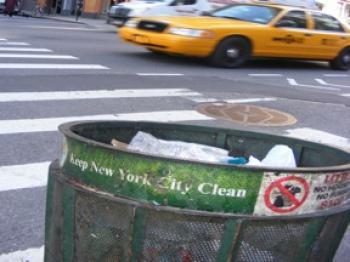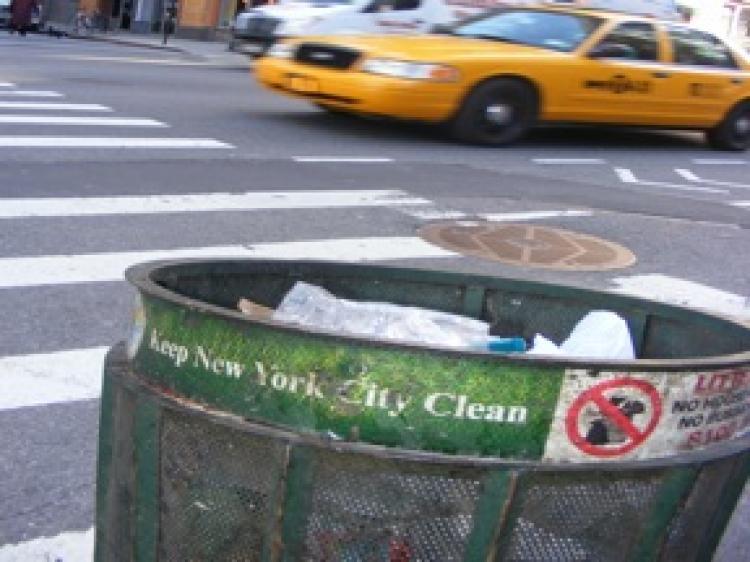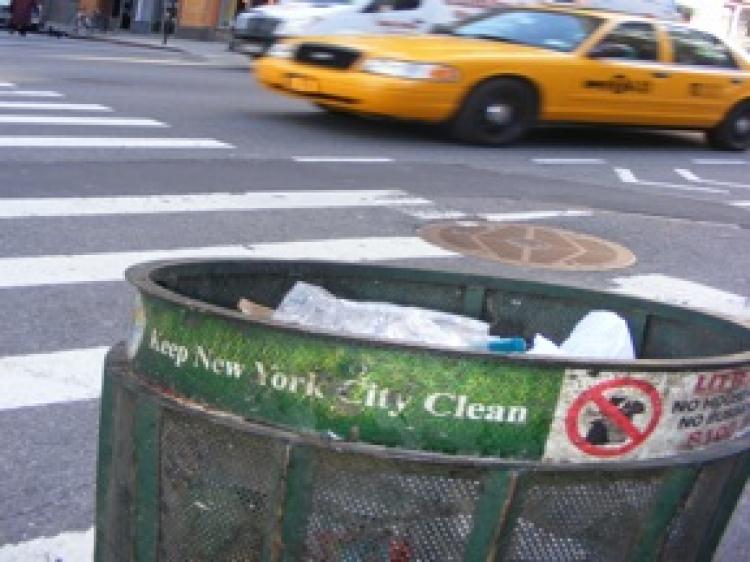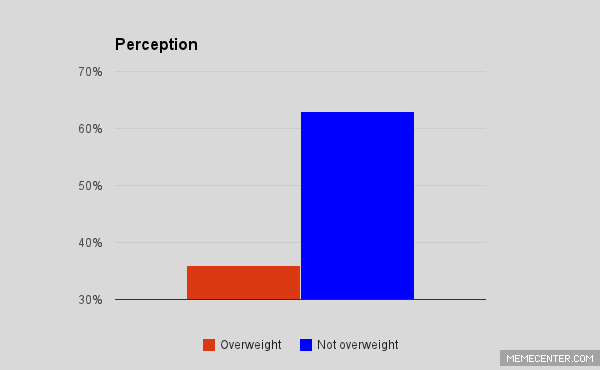NEW YORK—Bags of garbage piled up on the sidewalks are a common sight in New York City. Residents trundle garbage out to the curb and watch it being whisked away on a daily basis. What happens to everything we throw out is not something many New Yorkers think about. This, however, affects the lives of millions of people, even those far outside of the five boroughs.
Approximately 11,000 tons of garbage are produced in the city every day, according to the Department of Sanitation. After collecting the trash, sanitation trucks bring it to a large transfer station, where it is dumped, reloaded, and then shipped as far away as South Carolina to be buried in a landfill.
Among the other states receiving New York trash are New Jersey, Ohio, Pennsylvania, and Virginia.
The environmental and economic impact of this process is substantial, says professor Nickolas Themelis from the Earth Institute at Columbia University, with greenhouse gas emissions being of a particular concern. Roughly 100,000 trucks are needed to transfer the trash to out-of-state landfills every year—in addition to the waste transferred by trains, Themelis said.
For most New Yorkers, exporting the garbage is not much of a concern. “Landfilling in other states is not a danger for New Yorkers; that’s why they like it,” Themelis noted.
The current waste management process was put place after the closing of the Fresh Kills landfill on Staten Island in 2001. Exporting the garbage started out as a temporary solution, but was formalized as a policy in 2006 in a 20-year waste management plan.
Sending trash to other states makes little sense to Seldman. “New York City generates enough garbage a day—26,000 tons a day—to have a factory for glass, plastic, composting, and paper, to be handled within the city or very close to the city,” he said. “That should be the goal, so that New York City could take care of its own garbage.”
The Department of Sanitation only deals only with residential waste, leaving restaurant and commercial establishments to deal with their own garbage; this accounts for differences in total waste estimates between the city and other organizations.
What is lacking in the city’s recycling program are incentives to recycle, said Seldman, adding that other cities, like Toronto, have managed to greatly increase their recycling efforts through monetary incentives.
There are also other options in addition to recycling. The best option is to convert waste to energy, said Themelis, as this is the only viable way to deal with such large amount of garbage. Two factories already turn the city’s garbage to electricity.
The benefits of waste-to-energy plants are many, Themelis said. These plants are less wasteful in both cash and energy. Instead of using up fuel and electricity, they generate electricity that is then sold. If these plants are positioned in the city, they could also benefit the local economy. In the past, environmentalists objected to dealing with trash in this way due to concerns over hazardous by-products.
According to the Department of Sanitation, there are no plans to change the way the city is handling its trash. As landfills fill up, trucks will carry the garbage farther and farther away.
Approximately 11,000 tons of garbage are produced in the city every day, according to the Department of Sanitation. After collecting the trash, sanitation trucks bring it to a large transfer station, where it is dumped, reloaded, and then shipped as far away as South Carolina to be buried in a landfill.
Among the other states receiving New York trash are New Jersey, Ohio, Pennsylvania, and Virginia.
The environmental and economic impact of this process is substantial, says professor Nickolas Themelis from the Earth Institute at Columbia University, with greenhouse gas emissions being of a particular concern. Roughly 100,000 trucks are needed to transfer the trash to out-of-state landfills every year—in addition to the waste transferred by trains, Themelis said.
For most New Yorkers, exporting the garbage is not much of a concern. “Landfilling in other states is not a danger for New Yorkers; that’s why they like it,” Themelis noted.
The current waste management process was put place after the closing of the Fresh Kills landfill on Staten Island in 2001. Exporting the garbage started out as a temporary solution, but was formalized as a policy in 2006 in a 20-year waste management plan.
Sustainable Alternatives
“Most of the materials do not have to be sent down there, because most of the materials are recyclable,” said Neil Seldman, president of the Institute for Local Self-Reliance. Even though recycling efforts are in place, not enough waste is being recycled, he added.Sending trash to other states makes little sense to Seldman. “New York City generates enough garbage a day—26,000 tons a day—to have a factory for glass, plastic, composting, and paper, to be handled within the city or very close to the city,” he said. “That should be the goal, so that New York City could take care of its own garbage.”
The Department of Sanitation only deals only with residential waste, leaving restaurant and commercial establishments to deal with their own garbage; this accounts for differences in total waste estimates between the city and other organizations.
What is lacking in the city’s recycling program are incentives to recycle, said Seldman, adding that other cities, like Toronto, have managed to greatly increase their recycling efforts through monetary incentives.
There are also other options in addition to recycling. The best option is to convert waste to energy, said Themelis, as this is the only viable way to deal with such large amount of garbage. Two factories already turn the city’s garbage to electricity.
The benefits of waste-to-energy plants are many, Themelis said. These plants are less wasteful in both cash and energy. Instead of using up fuel and electricity, they generate electricity that is then sold. If these plants are positioned in the city, they could also benefit the local economy. In the past, environmentalists objected to dealing with trash in this way due to concerns over hazardous by-products.
According to the Department of Sanitation, there are no plans to change the way the city is handling its trash. As landfills fill up, trucks will carry the garbage farther and farther away.






